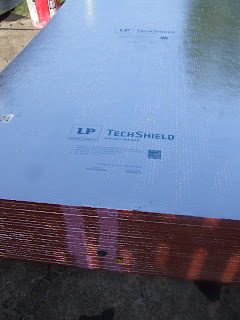I wanted to share this letter we sent to our City Councilor for District 4 in Tulsa (no response, even after 3 follow-up phone calls/re-sent emails/left messages). Don't mean to throw anyone under the bus, but come on.
____________________
December 18, 2008
Jason “Eric” Gomez
TULSA CITY COUNCILOR DISTRICT 4
918-596-1924
dist4@tulsacouncil.orgGreetings Eric,
This is the first letter I’ve written to my City Councilor (I know, shame on me!), so let first me give you a brief background about me. I live in Jefferson Hills and I have recently acquired the house next door which has been uninhabited for almost 8 years. As part of the requirements for my Environmental Science graduate program at OSU Tulsa, I aim to conduct a major renovation in order to certify the home using the U.S. Green Building Council’s Leadership in Energy and Environmental Design for Homes (LEED-H) program. I was happy to learn about your extensive background in the restoration, remodeling and construction industries, so the main point of this memo should hit close to home with you.
As you know, any construction project generates a lot of waste – whether it is new construction, a remodel or demolition (aka “deconstruction” to all you greenies out there). In fact, construction and demolition (C&D) waste accounts for an enormous amount of the waste stream in the United States – some estimates say up to 30%. While most of this waste accrues to landfills, the majority of the waste stream is potentially reusable or recyclable. As I began conducting pre-planning work on what C&D materials I could divert from the landfill, it became apparent that Tulsa was ill prepared to handle a variety of C&D waste materials. I spent a good deal of time calling around and surfing the net (including the M.e.t. website) but didn’t have much luck finding information or businesses/recycling facilities in the Tulsa area that for reclaiming/reusing C&D waste materials for the following items:
· Carpet (not the pad)
· Asphalt shingles [since this letter, I have found that APAC provides an asphalt shingle recycling service]
· Old framing wood/studs
· Attic insulation
· Plaster
Carpet and asphalt shingles are huge sources of waste and can be recycled in many cases. Concrete is actually the largest C&D waste component but since my home has a pier and beam foundation it wasn’t an issue for me. Material such as gypsum board can be ground up and used in many different ways such as in the making of Portland cement or as recycled content for new drywall.
Is there any legislation in the works to address this unique need? If not, can we create some to incentives for businesses and citizens? Cities and agencies throughout the United States have successfully employed numerous waste mitigation strategies for C&D waste. President-elect Obama has mentioned the new green economy in nearly ever major speech he has given recently. His economic stimulus package has sparked a need for the country to be ready for change and I can’t think of a more appropriate issue to be “shovel ready” than the C&D waste sector.
What will happen when companies looking to move to or expand in Tulsa learn that they will not be able to meet green standards? As someone who has been “in the business” as well as in city government, I’m sure you’ve thought more about some measures we can take to help establish a starting point. There are many best practices steps that local (and state) governments can take to encourage C&D debris recycling including - but not limited to - implementing policy, providing tax incentives, rebates, sales tax exemptions and low interest loans to recycling businesses. Contractor strategies, building code specifications, and a practice called "optimum value engineering" can also help to minimize the C&D waste stream.
Best regards,
Chad Burden, City of Tulsa Master Recycler
 Wanted to give you a few more pics of the work we've done during the hardwood floor excersize.
Wanted to give you a few more pics of the work we've done during the hardwood floor excersize. Don't just tear it out and thorw it away - are you nuts?
Don't just tear it out and thorw it away - are you nuts?  Look how pretty it can look again, with a little care and a little....wait...... a lot of effort is put into it! :)
Look how pretty it can look again, with a little care and a little....wait...... a lot of effort is put into it! :)




























